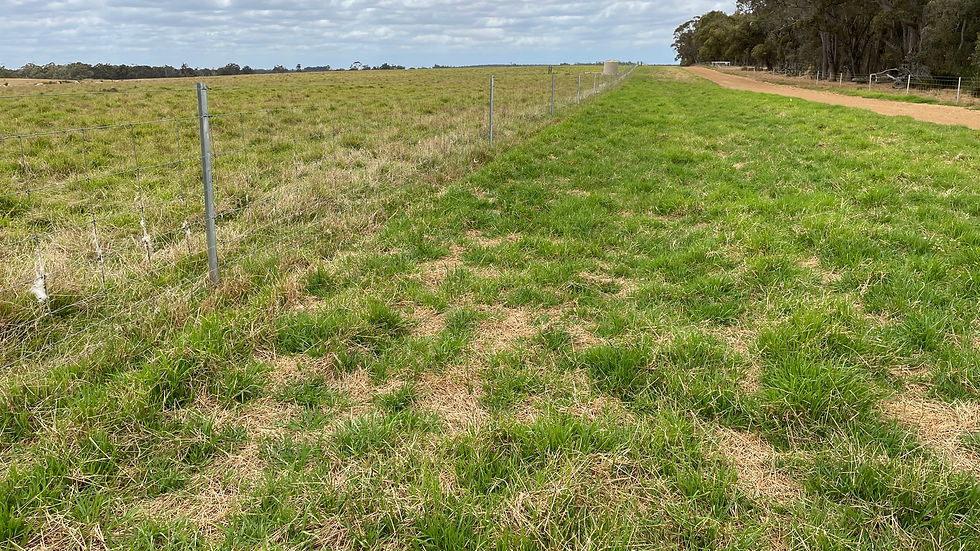If you say yes to something, you are saying no to something else - feeding the kike.
- Wayne
- Feb 15, 2023
- 3 min read
Those who have followed me for a few decades know how I am against the philosophy of cut costs, cut costs. If you say yes to something, you are saying no to something else. For example, say yes to working on a Saturday morning and you are saying no to watching your kids play sport on Saturday morning.
I mentioned in the previous blog about some people's fears of making mistakes. We will all make mistakes. We are not born with perfect wisdom and experience. We gain it, and mostly from mistakes and learning how to do things better. There are consequences to all decisions and non-decisions, which really is a decision.
In October when the pastures are at their peak and everything looks wonderful, that is when kikuyu needs some plant food to enable it to stay productive longer into the summer and autumn. It is a timing almost no one does because visually it does not need fertiliser, and summer is coming. Why fertilise when there is so much feed and the plants will soon die as summer encroaches?
If you have ever grown summer crops, you know that the better the nutrition, the more resilient they are. Kikuyu is a summer crop. If it enters summer starving and growing in acidic soil, and it doesn't rain in the summer, kikuyu will soon be brown and stay that way all summer.
In October last year when the pastures were rampant and we were understocked, and because the price of fertiliser was so high, I did not apply any fertiliser - the first time I hadn't since we began farming (2019 was our first season). But I knew the consequences if we had a dry summer, and it has come to pass.
At the time of writing (15th Feb 2023), we have only received 8mm of rain since 26th November and all was evaporated in the same day. As a consequence, on the poorer nutrition areas of the farm, the kikuyu is recovering much slower after each grazing. If it does not rain until the end of March, it is likely we will have most of the livestock off the paddocks and being fed out of a lick feeder and hay until 2-3 weeks after a useful rain. We have begun trail feeding low lignan oats (>14% protein and >13MJ/kg) to all the sheep every few days because of the declining energy and protein supply from the pastures. We begin lambing on 25th March.
The consequence of not feeding the kikuyu back in October means I will need to spend money later on to hand-feed sheep. In our current circumstances, I would not have done things differently because we did not have the cashflow nor the sheep numbers to justify the expenditure. However, this is the year we expect to reach our full stocking rate of ewes (30/ha, which is 5,500 on the 185ha) and so the plan is to fertilise more often and to feed the kikuyu in October even when it looks like it does not need feeding.
Have a think about your pastures and livestock situation. Compare the cost of fertiliser in spring to grow a hay or silage crop, to the cost of hand feeding. It varies a lot of course, but generally, it is more expensive to buy in feed than to grow the feed. In our situation where we have good rainfall and generally mild summers, we can stay green all year (the kikuyu, not the ryegrass and clovers). It is well worth it to feed the pastures so that they grow as long as possible into the summer. If we don't, we increase the probability of having to spend more money on grain and hay to feed the sheep until a few weeks after it does rain. If I don't feed the pastures into the summer (saying no to fertiliser), I am saying yes to having to spend extra money on hand feeding.
Right now we have already spread the base nutrients (P, K, S etc) in January and will spread some N as soon as we see a high probability of a decent rainfall coming. The kikuyu will boom as soon as we receive 10+mm of rain and there is N and all of the other nutrients waiting around its roots. But less money would have been needed to hand feed the sheep if the pasture (kikuyu mainly) was really well fed coming into the summer. There are consequences to our decisions.
Now for some photos from January showing the pastures were still green, but low protein. At the time of writing (15th Feb), some paddocks are now only providing 1-3 days grazing for ~1,000 ewes on 8-13ha paddocks. Our best nutrition paddocks are still providing 4-5 days grazing but we have started trailing out some oats every few days since the ewes are getting closer to lambing (due 25th March).










Comments